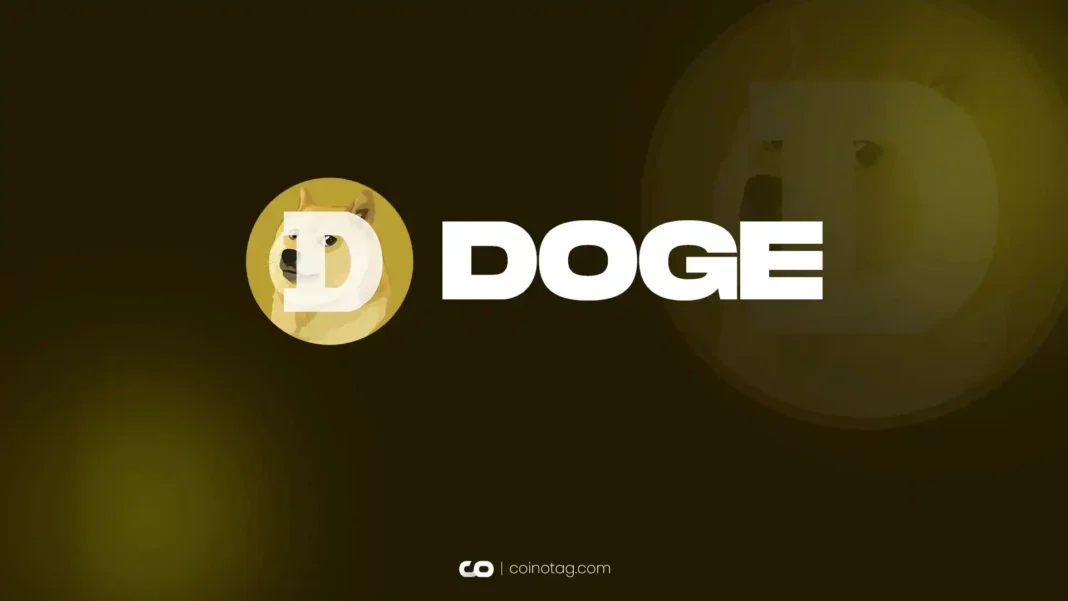| COINOTAG recommends • Exchange signup |
| 💹 Trade with pro tools |
| Fast execution, robust charts, clean risk controls. |
| 👉 Open account → |
| COINOTAG recommends • Exchange signup |
| 🚀 Smooth orders, clear control |
| Advanced order types and market depth in one view. |
| 👉 Create account → |
| COINOTAG recommends • Exchange signup |
| 📈 Clarity in volatile markets |
| Plan entries & exits, manage positions with discipline. |
| 👉 Sign up → |
| COINOTAG recommends • Exchange signup |
| ⚡ Speed, depth, reliability |
| Execute confidently when timing matters. |
| 👉 Open account → |
| COINOTAG recommends • Exchange signup |
| 🧭 A focused workflow for traders |
| Alerts, watchlists, and a repeatable process. |
| 👉 Get started → |
| COINOTAG recommends • Exchange signup |
| ✅ Data‑driven decisions |
| Focus on process—not noise. |
| 👉 Sign up → |
- The Doge-1 mission, underpinned by Dogecoin funding, edges closer to a moon orbit with recent regulatory approval.
- NTIA’s sanction paves the way for the final FCC license, a crucial step for the space endeavor.
- “An exciting development in cryptocurrency’s role in space exploration,” says Samuel Reid, CEO of Geometric Energy Corporation.
With its latest regulatory approval, Doge-1, a Dogecoin (DOGE) funded space mission, takes a giant leap towards a moon orbit, marking a groundbreaking moment in both cryptocurrency and space exploration.
Regulatory Approval Fuels Doge-1’s Moon Mission
The Doge-1 mission, a pioneering endeavor funded entirely by Dogecoin (DOGE), is inching closer to reality with the National Telecommunications and Information Administration’s (NTIA) recent approval. This critical milestone leads up to the anticipated Federal Communications Commission (FCC) license, setting the stage for an unprecedented space journey. Doge-1, a cube satellite, is set to orbit the moon, offering a live video feed back to Earth, a first of its kind initiative by Geometric Energy Corporation, a leading name in space technology.
From Cryptocurrency to Lunar Orbit: The Doge-1 Journey
Announced in May 2021, the Doge-1 satellite represents a unique collaboration between cryptocurrency and space technology. Funded entirely by Dogecoin, it symbolizes the increasing influence of digital currencies in sectors beyond finance. The satellite, slated for a launch aboard a SpaceX Falcon 9 rocket, embodies the evolving synergy between cutting-edge technology and innovative funding methods. “The NTIA approval is a pivotal step towards our ambitious moon mission,” stated Samuel Reid, CEO of Geometric Energy Corporation, highlighting the project’s significance in a recent statement.
| COINOTAG recommends • Professional traders group |
| 💎 Join a professional trading community |
| Work with senior traders, research‑backed setups, and risk‑first frameworks. |
| 👉 Join the group → |
| COINOTAG recommends • Professional traders group |
| 📊 Transparent performance, real process |
| Spot strategies with documented months of triple‑digit runs during strong trends; futures plans use defined R:R and sizing. |
| 👉 Get access → |
| COINOTAG recommends • Professional traders group |
| 🧭 Research → Plan → Execute |
| Daily levels, watchlists, and post‑trade reviews to build consistency. |
| 👉 Join now → |
| COINOTAG recommends • Professional traders group |
| 🛡️ Risk comes first |
| Sizing methods, invalidation rules, and R‑multiples baked into every plan. |
| 👉 Start today → |
| COINOTAG recommends • Professional traders group |
| 🧠 Learn the “why” behind each trade |
| Live breakdowns, playbooks, and framework‑first education. |
| 👉 Join the group → |
| COINOTAG recommends • Professional traders group |
| 🚀 Insider • APEX • INNER CIRCLE |
| Choose the depth you need—tools, coaching, and member rooms. |
| 👉 Explore tiers → |
A New Era of Space Advertising: The DOGE-1 Satellite
DOGE-1’s mission extends beyond mere space exploration; it ventures into the realm of space advertising. The satellite will feature a miniature screen, showcasing advertisements, logos, and images. These will be broadcast back to Earth, heralding a new era of extraterrestrial advertising. This initiative marks DOGE-1 as the first satellite launch completely financed through a cryptocurrency, in this case, DOGE tokens.
Delays and Rescheduling: The Path to Launch
Originally announced by SpaceX founder Elon Musk in 2021 as part of a rideshare with Intuitive Machines and NASA, the DOGE-1 launch has faced its share of postponements. Intuitive Machines’ launch provider, SpaceX, delayed the mission from its initial 2022 schedule to January 2024. These adjustments reflect the complexities and challenges inherent in space missions, underscoring the need for meticulous planning and coordination.
| COINOTAG recommends • Exchange signup |
| 📈 Clear interface, precise orders |
| Sharp entries & exits with actionable alerts. |
| 👉 Create free account → |
| COINOTAG recommends • Exchange signup |
| 🧠 Smarter tools. Better decisions. |
| Depth analytics and risk features in one view. |
| 👉 Sign up → |
| COINOTAG recommends • Exchange signup |
| 🎯 Take control of entries & exits |
| Set alerts, define stops, execute consistently. |
| 👉 Open account → |
| COINOTAG recommends • Exchange signup |
| 🛠️ From idea to execution |
| Turn setups into plans with practical order types. |
| 👉 Join now → |
| COINOTAG recommends • Exchange signup |
| 📋 Trade your plan |
| Watchlists and routing that support focus. |
| 👉 Get started → |
| COINOTAG recommends • Exchange signup |
| 📊 Precision without the noise |
| Data‑first workflows for active traders. |
| 👉 Sign up → |
Broader Implications: Dogecoin’s Growing Space Ambitions
The DOGE-1 mission is not alone in its celestial aspirations. Another Dogecoin-related mission is on the horizon, with Dogecoin developers recently revealing plans for a physical Dogecoin token to be sent to the moon. Partnered with Pittsburgh-based Astrobotic, this mission, scheduled for December 23, carries 21 payloads, including contributions from governments, companies, universities, and NASA’s CLPS initiative. These ventures signal a growing trend of cryptocurrencies intersecting with space exploration, expanding the boundaries of both sectors.
Conclusion
The progression of the Doge-1 mission, buoyed by its latest regulatory approval, exemplifies the dynamic interplay between cryptocurrency and space technology. As this mission moves closer to its historic launch, it not only marks a milestone for Dogecoin but also heralds a new chapter in space exploration and commercialization. With the world’s eyes set on the lunar orbit, Doge-1 is poised to be more than a mission; it’s a testament to the innovative spirit of the digital age.
| COINOTAG recommends • Traders club |
| ⚡ Futures with discipline |
| Defined R:R, pre‑set invalidation, execution checklists. |
| 👉 Join the club → |
| COINOTAG recommends • Traders club |
| 🎯 Spot strategies that compound |
| Momentum & accumulation frameworks managed with clear risk. |
| 👉 Get access → |
| COINOTAG recommends • Traders club |
| 🏛️ APEX tier for serious traders |
| Deep dives, analyst Q&A, and accountability sprints. |
| 👉 Explore APEX → |
| COINOTAG recommends • Traders club |
| 📈 Real‑time market structure |
| Key levels, liquidity zones, and actionable context. |
| 👉 Join now → |
| COINOTAG recommends • Traders club |
| 🔔 Smart alerts, not noise |
| Context‑rich notifications tied to plans and risk—never hype. |
| 👉 Get access → |
| COINOTAG recommends • Traders club |
| 🤝 Peer review & coaching |
| Hands‑on feedback that sharpens execution and risk control. |
| 👉 Join the club → |
| COINOTAG recommends • Members‑only research |
| 📌 Curated setups, clearly explained |
| Entry, invalidation, targets, and R:R defined before execution. |
| 👉 Get access → |
| COINOTAG recommends • Members‑only research |
| 🧠 Data‑led decision making |
| Technical + flow + context synthesized into actionable plans. |
| 👉 Join now → |
| COINOTAG recommends • Members‑only research |
| 🧱 Consistency over hype |
| Repeatable rules, realistic expectations, and a calmer mindset. |
| 👉 Get access → |
| COINOTAG recommends • Members‑only research |
| 🕒 Patience is an edge |
| Wait for confirmation and manage risk with checklists. |
| 👉 Join now → |
| COINOTAG recommends • Members‑only research |
| 💼 Professional mentorship |
| Guidance from seasoned traders and structured feedback loops. |
| 👉 Get access → |
| COINOTAG recommends • Members‑only research |
| 🧮 Track • Review • Improve |
| Documented PnL tracking and post‑mortems to accelerate learning. |
| 👉 Join now → |







